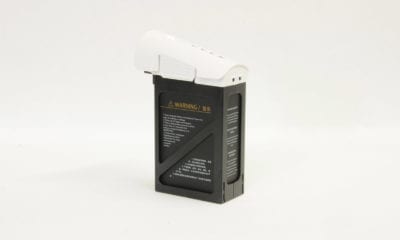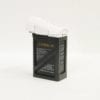
News
Hybrid Cathodes – Major Advance for Lithium Batteries
Who could have imagined that research and development in the functioning of cathode rays of conventional batteries would form the foundation of some niche applications, like a drone with long range!
According to reports from Massachusetts Institute of Technology (MIT), a research team led by Professor Jing Kong and others at MIT conducted experiments using ‘Hybrid’ cathodes in batteries potentially enabling electric cars to travel further or portable electronics to run for longer without recharging.
Researchers at MIT and in China say they’ve made a major advance in this area, with a new version of a key component for lithium batteries, the cathode. They coined the term “hybrid” cathode for their concept since it results from the combination of two aspects and different approaches used before- one to increase the energy output per pound (gravimetric energy density) packing a lot of punch per volume because of their high densities; and the other for the energy per litre (volumetric energy density). The synergistic combination, they claim, produces a version that provides the benefits of both and more.
The work described in a paper co-authored by Ju Li, an MIT Professor of nuclear science and engineering and of materials science and engineering; Weijiang Xue, an MIT post doctorate; and 13 others was published in the journal Nature Energy.
Currently lithium-ion batteries tend to use cathodes made of a transition metal oxide, however, batteries with cathodes made of sulphur are considered a promising alternative to reduce weight. As of now, the designers of lithium-sulphur batteries face a trade-off.
In their new hybrid system, the researchers have managed to combine the two approaches into a new cathode that incorporates using particles of the two materials and compressed to make the solid cathode. “It is like the primer and TNT in an explosive, one fast-acting, and one with higher energy per weight,” Li says.
Li says that the typical sulphur cathodes are made up of 20 to 30 percent carbon but the new version needs only 10 percent carbon. The net effect of using the new material is substantial. Today’s commercial lithium-ion batteries can have energy densities of about 250 watt-hours per kilogram and 700 watt-hours per litre, whereas lithium-sulphur batteries top out at about 400 watt-hours per kilogram but only 400 watt-hours per litre. The new version, in its initial version that has not yet gone through an optimization process, can already reach more than 360 watt-hours per kilogram and 581 watt-hours per litre, Li says. It can beat both lithium-ion and lithium-sulphur batteries in terms of the combination of these energy densities.
He says, “We think we can get to 400 watt-hours per kilogram and 700 watt-hours per litre,” with that latter figure equalling that of lithium-ion. The team has developed a large-scale battery prototype laboratory experiments instead of testing small coin cells with capacities of only several milliamp-hours, they have produced a three-layer pouch cell which is comparable to some commercial batteries, indicating that the new device does match its predicted characteristics.
So far, the new cell can’t quite live up to the longevity of lithium-ion batteries- in terms of the number of charge-discharge cycles it can undergo before losing too much power to be useful. But that limitation has to do with the overall cell design, and “we’re working on that,” Li says. Even in its present early form, he says, “this may be useful for some niche applications, like a drone with long range,” where both weight and volume matter more than longevity.
Of the many contributors who supported the work are: the Samsung Advanced institute of Technology, the National Key Technologies R&D Program of China, the National Science Foundation of China, and MIT’s Department of Materials Science and Engineering. The team also included researchers at the Chinese Academy of Sciences in Beijing, the Songshan Lake Materials Laboratory in Guangdong, China, the Samsung Advanced Institute of Technology America in Burlington, Massachusetts, and Tongji University in Shanghai.























